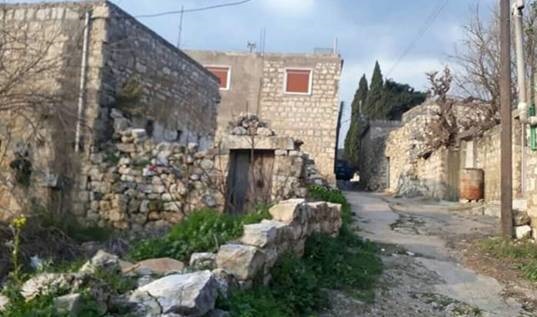Tannourine village is located on the western side of Wadi al-Nadarah on the borders of Tartous Governorate. It is about 400 meters above sea level. The area of the village is relatively large compared to the neighboring villages, as it intercedes a group of villages that include “Habnamra,” “Jawar al-Afs”, “Marmarita”, “Al-Matras”, “Mashta Azar” and “Ain al-Raheb”. Its population is approximately 2,400, some of them live in the village, and others in cities, especially Damascus and Homs, and there are also a large number of expatriates abroad.

It is distinguished by the amazing beauty of its farms and orchards. Beekeeping and harvesting honey, the ancient olive presses and “Ain Daoud ” in addition to the various places of worship are among its most prominent features.
Regarding the name “Tannourine”; there are two ideas about why the village is called“ Tannourine ”; the first is that the name“ Tannourine ”means warm land, and this is true, as the temperature in the village is slightly higher than in the rest of the surrounding villages and in winter it is considered relatively warm compared to the rest of the villages. As for the second, it is called so due to the large number of furnaces in it, as in the past, every family owned its own furnace (Tannour), inside the house.
As for the most important features of Tannourine; there are five important landmarks that distinguish the village, the first of which is a spring of water called “Ain Daoud”, which is mineral underground water .The Greek Orthodox Patriarchate has donated money to beautify it and turned it into a wonderful building equipped with special water channels that go to the surrounding farmland
The second landmark is the shrine of Sheikh “Al-Ajami”, which is an important religious shrine that was rebuilt by some societies, especially its dome. It is noteworthy that it is completely adjacent to the Church of the Virgin Mary, evidence of love, coexistence and the prevailing values in the village.

As for the third landmark, the “Virgin Mary” Church of the Greek Orthodox community- it is an old church that was built in 1890 AD, and considered one of the old churches in Wadi Al-Nadarah region. The fourth landmark is the Roman Catholic Church “Our Lady”, which was built in 1920, where many annual activities are held .
The last landmark is a shrine or statue of the “Lady” in the village, which was built with the help and donation of some of the villagers. In addition to two ancient mills on the bank of the Tannourine River that have now become ancient remains surrounded by trees and herbaceous plants.
 The residents work in two main areas. The first is olive cultivation, where there are about 100,000 fruitful olive trees in Tannourine as it has three mills, one of which is modern and adopts centrifugal pressure technology, which is a modern method of olive squeezing and oil extraction, and two presses work in the old style.
The residents work in two main areas. The first is olive cultivation, where there are about 100,000 fruitful olive trees in Tannourine as it has three mills, one of which is modern and adopts centrifugal pressure technology, which is a modern method of olive squeezing and oil extraction, and two presses work in the old style.
The second area is beekeeping and harvesting honey produced by the village, as it is the main source for a large number of families to secure livelihoods . There are about 2000 beehives to produce natural honey, in addition to some citrus farms and “gardens”,” Gardens “, here means farms that produce summer fruits, such as: apricots, peaches, pears, and other summer fruits.”
Amal Farhat

